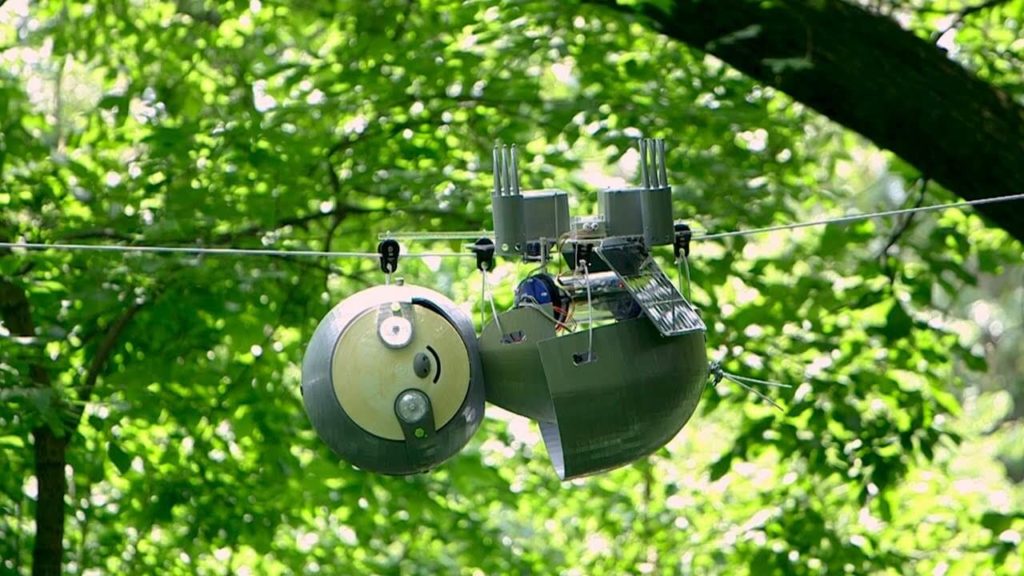A botanical garden in Atlanta, Georgia is the new home of a robot slot.
Over the next few months, robotic engineers are trialing SlothBot near Atlanta Botanical Garden’s Canopy Walk. Just like a real-life sloth, it moves slowly. This allows it to efficiently monitor the wildlife in its surrounding environment.
With a 3D-printed shell—which protects its motors, batteries, gearing, and sensing equipment—the robot moves slowly along a 100-foot cable. The cable is hung between two trees.
“Being slow and hyper-energy efficient will allow SlothBot to linger in the environment to observe things we can only see by being present continuously for months or even years,” Magnus Egerstedt, a professor at the Georgia Tech School of Electrical and Computer Engineering, told Technology.Org.
Egerstedt decided to design SlothBot after a visit to Costa Rica. He saw two-toed slots slowly moving along wires overhead in a vineyard. They were searching for food, and they were being “strategically slow,” he explained.
Combining Robotics and Conservation
Powered by solar panels, SlothBot helps to monitor the garden’s carbon dioxide levels, temperature, and weather, among other details. It may help scientists understand abiotic factors that impact critical ecosystems and could help to protect rare species.
Atlanta Botanical Garden’s vice president for conservation and research Emily Coffey added: “the most exciting goal we’ll demonstrate with SlothBot is the union of robotics and technology with conservation.”
Coffey hopes the new robotic animal won’t just help with conservation, but that it will entice more visitors too. Egerstedt hopes it will spike interest from children, in particular, as they walk past. He said: “thanks to SlothBot, I’m hoping we will get an entirely new generation interested in what robotics can do to make the world better.”
The SlothBot has other uses too. Researchers hope that if the testing goes well, it could be used in South America to observe orchid pollination, as well as endangered animals. It could also help agriculture—its sensors could detect threats to crops, like diseases and insect infestation.
Egerstedt said, “it’s really fascinating to think about robots becoming part of the environment, a member of an ecosystem.”


